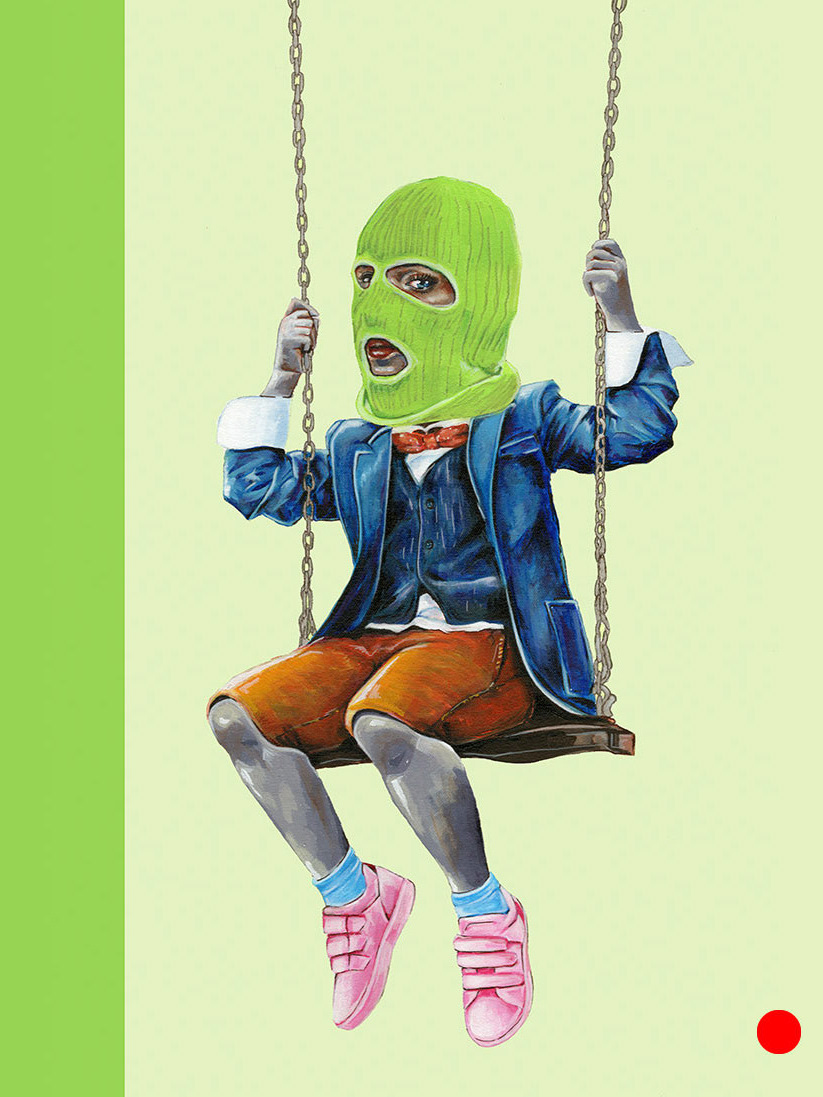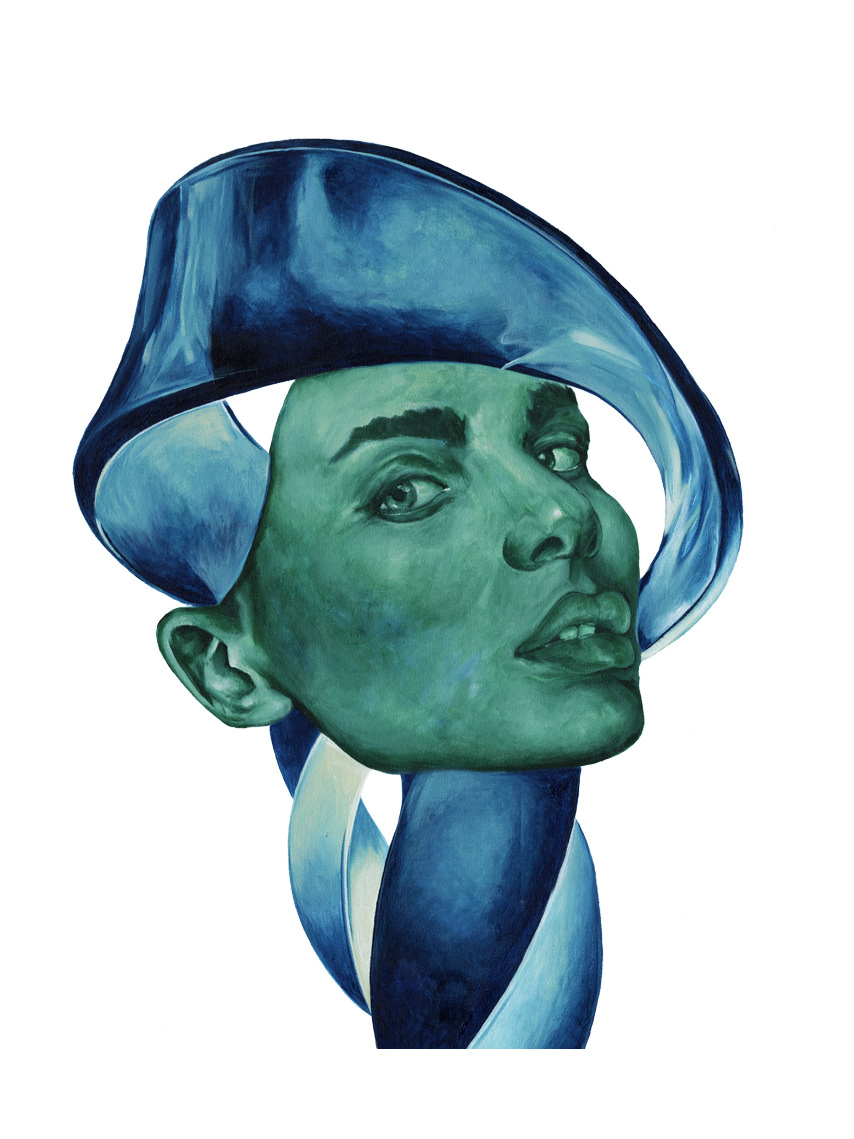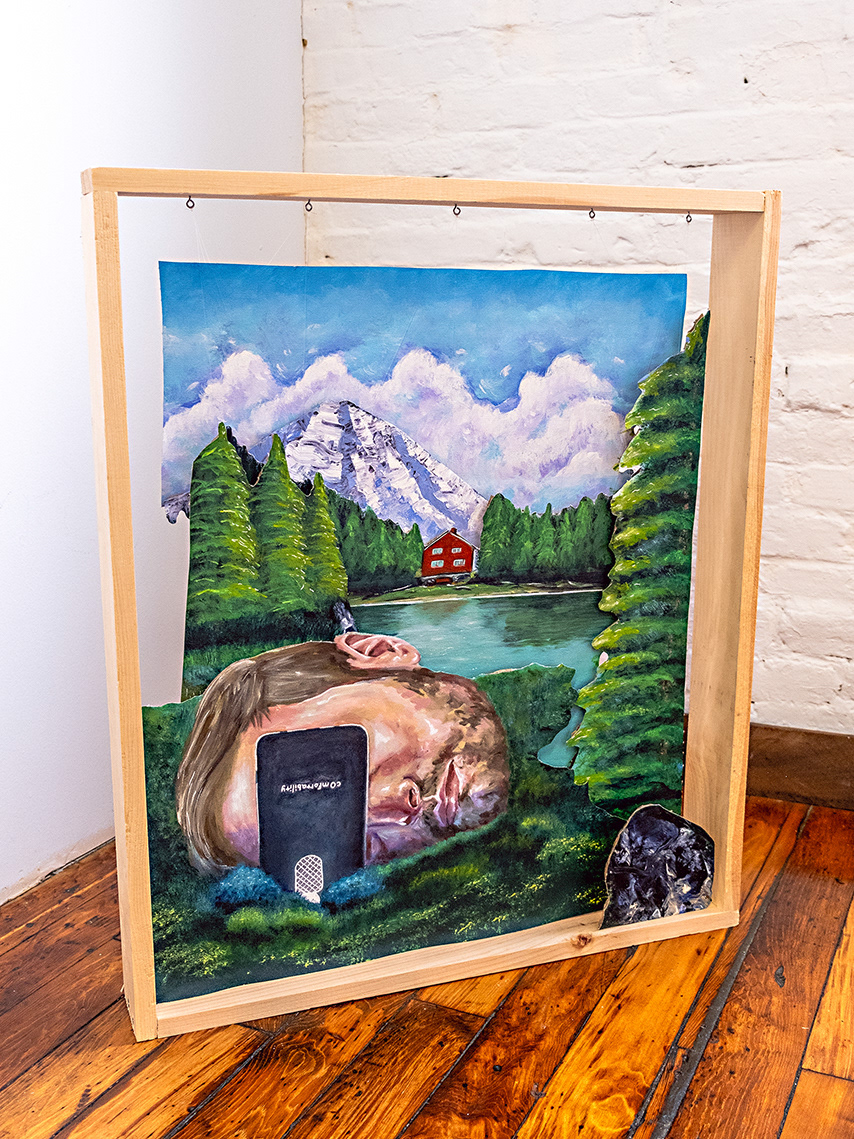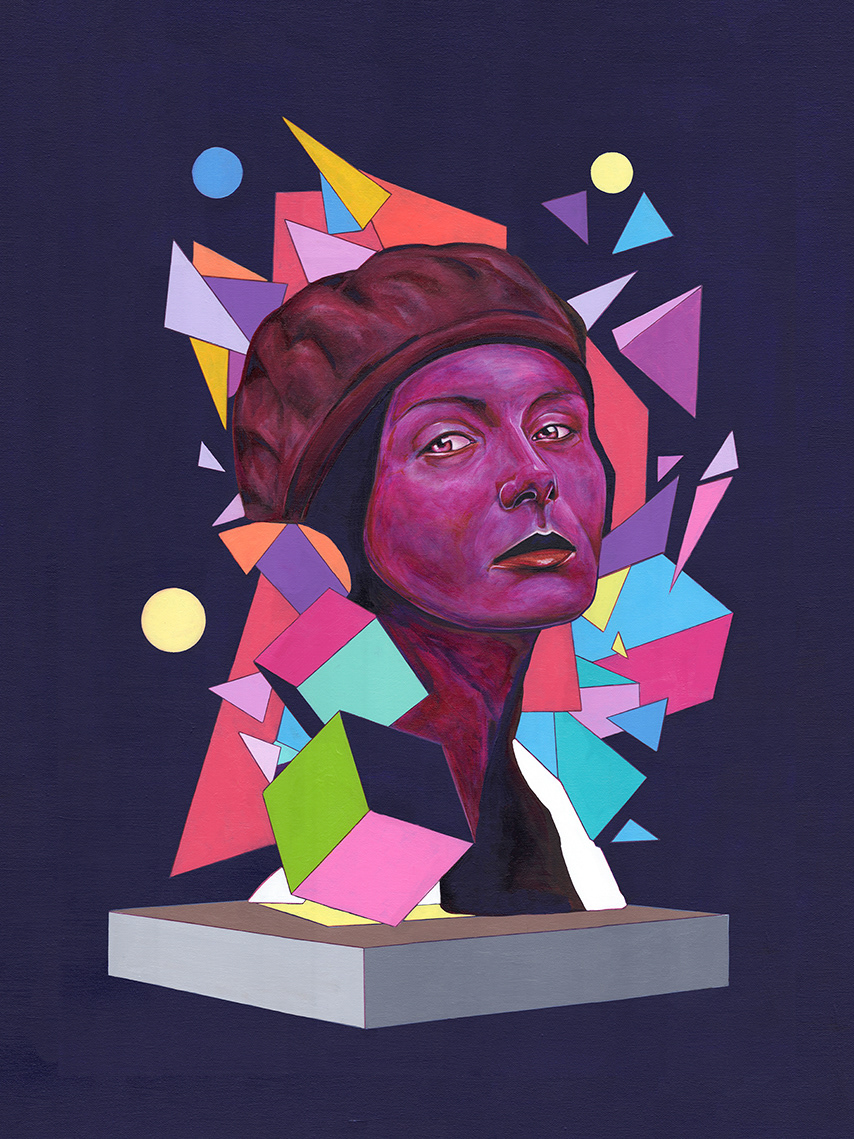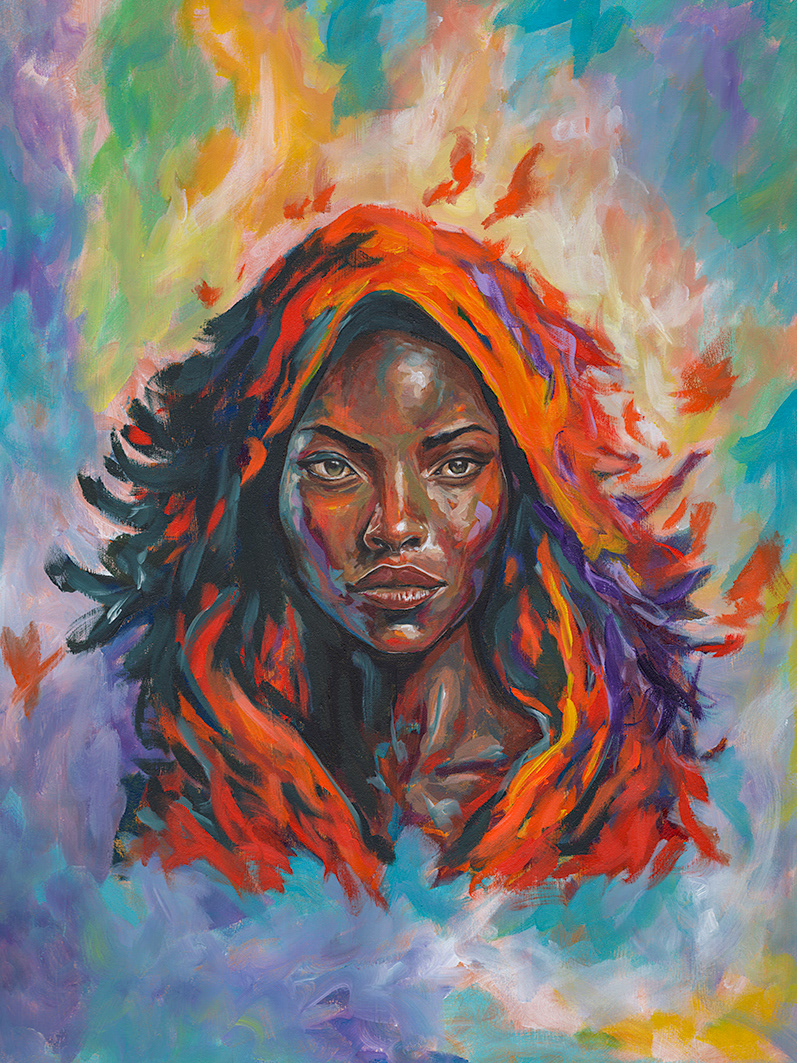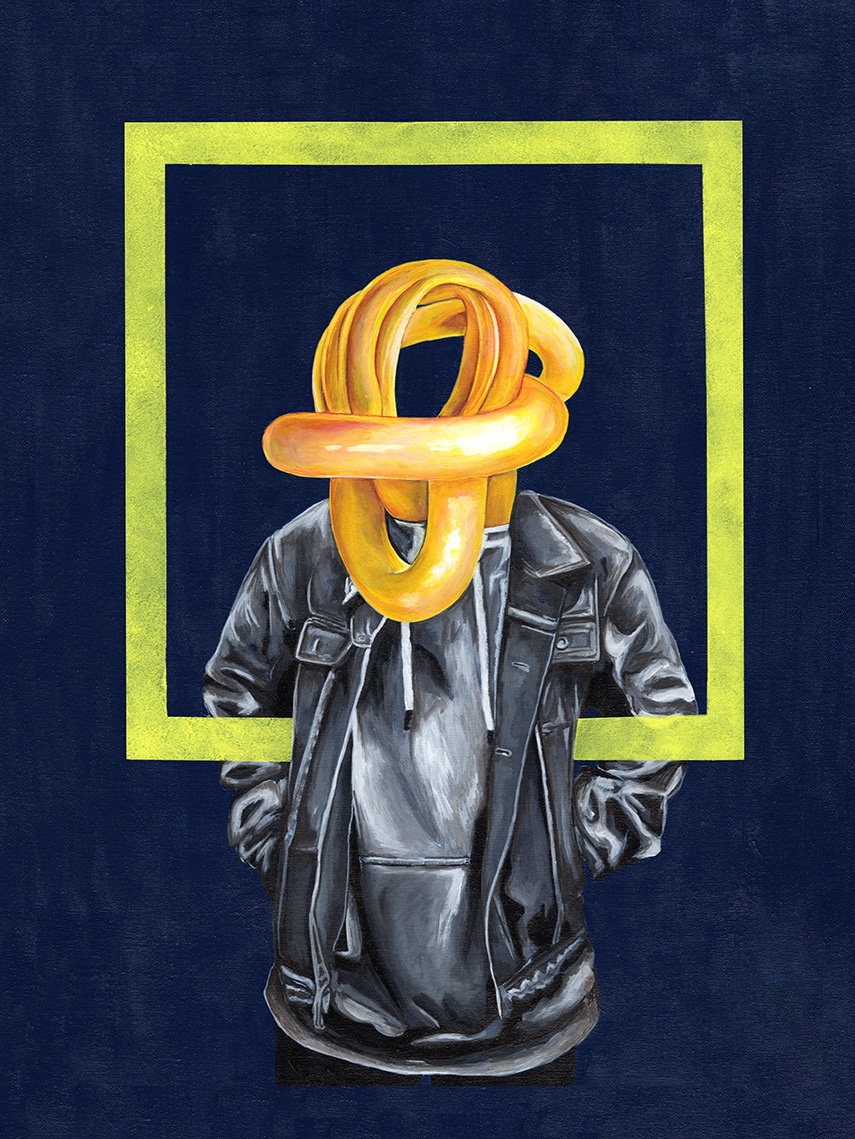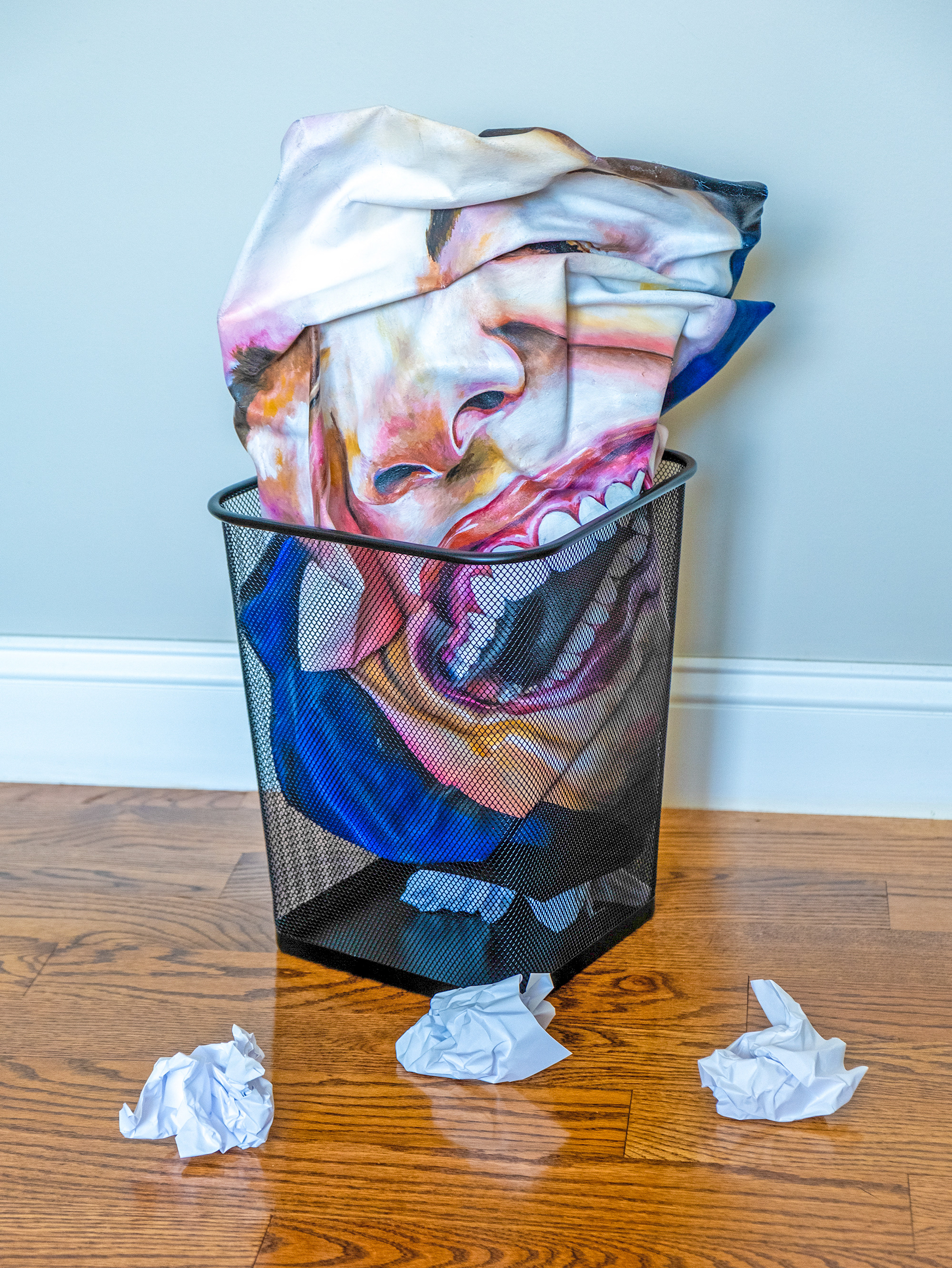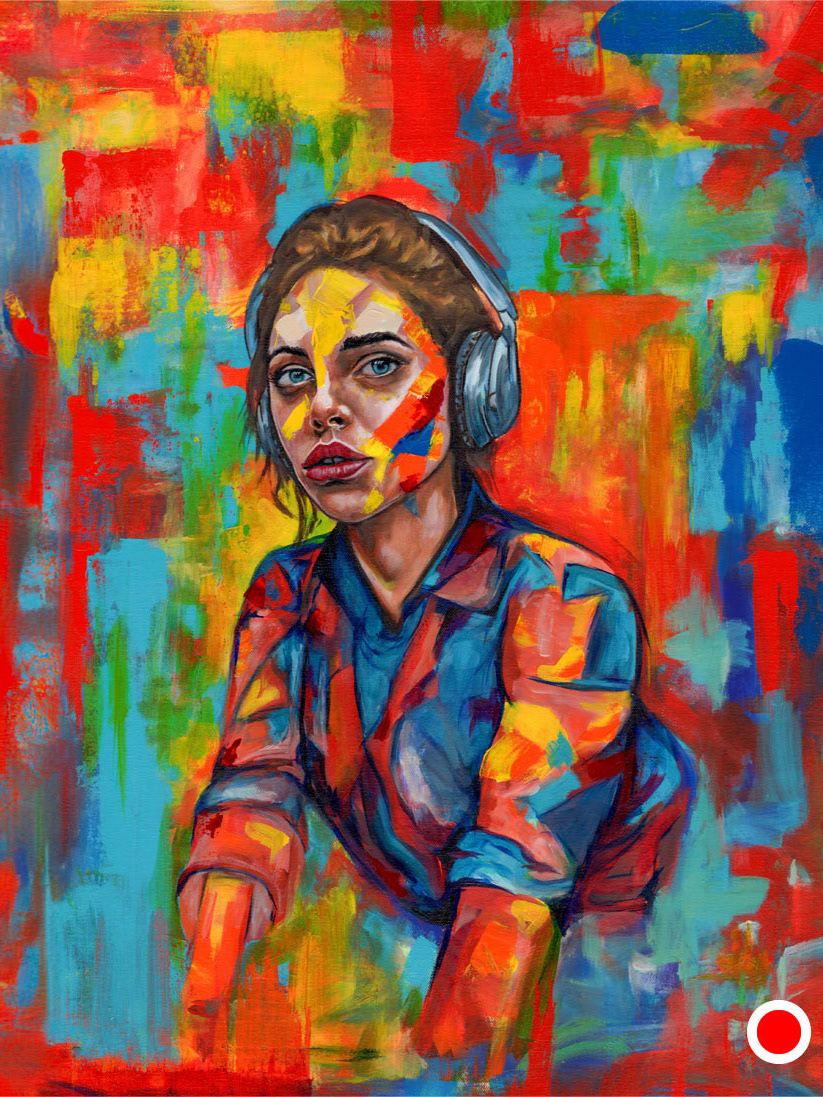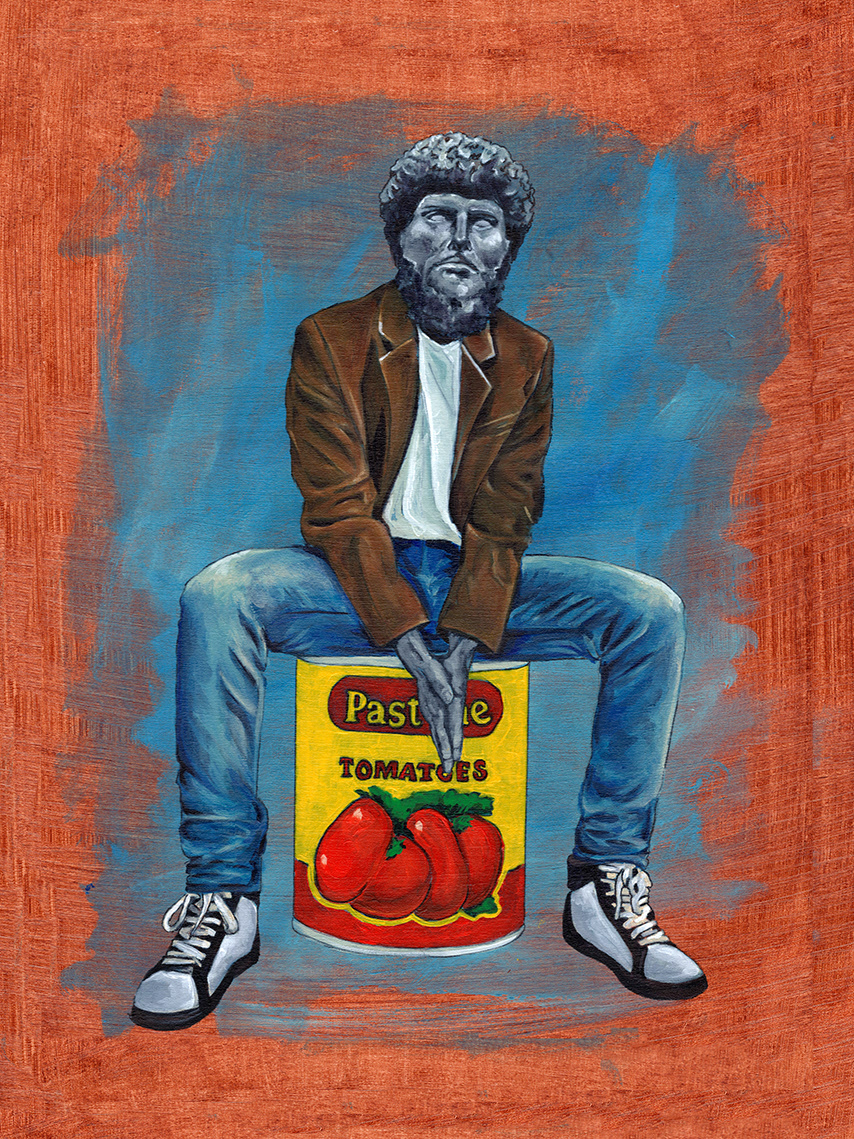Entangled Head Harmony is an evocative art series exploring how life’s struggles and transformations shape our identity. Inspired by my personal journey of overcoming challenges and defying limiting labels, each piece expresses complex emotions and roles through abstract shapes and tangled strings.
The tangled strings symbolize our thoughts, emotions, and connections, while their twists and knots represent the challenges, misunderstandings, and obstacles we all navigate. Through this work, I invite viewers to reflect on their own experiences, relationships, and the labels imposed on them by society.
As a child, I was labeled "learning disabled" and placed in special education. Facing difficulties early, I left high school at 16. By 19, resources were scarce, and I worked nights as a janitor. My lifeline was a computer with internet access, opening doors previously closed to me. Over the past 15 years, I have built a career as a tech designer, and in the last five years, I’ve focused on creating innovative AI products.
This series also celebrates empowerment and resilience. Just as I used technology to reshape my future after school, I believe technology can unlock opportunities for everyone, regardless of background. Entangled Head Harmony reflects my growth and serves as a reminder that beauty, strength, and new possibilities often emerge from life’s entanglements.
Direction Destiny examines the tension between fate and free will, probing why the futures we envision often diverge from the paths we ultimately walk. In harmony with the Entangled Head Harmony series, this piece employs abstract shapes and interwoven threads to symbolize the invisible forces choices, circumstances, relationships, and inner beliefs that both guide and limit our journeys.
The tangled lines embody the ongoing struggle between our desire to shape our destiny and the unseen currents that steer us away from our intended course. This artwork invites viewers to contemplate the limits of control in their own lives and poses a timeless question: If destiny awaits us all, why can’t we hold the reins and steer it exactly where we wish?
Prompt --------------------------------------------
Reflect on the area of your life where you feel destiny is guiding you but you haven’t fully taken control: [insert area]. What is one small action you can take today to start directing your own path?
Identify any beliefs or fears holding you back: [insert beliefs/fears]. Imagine how your life would change if you embraced your power to shape your future: [describe changes]. What support or habits can help you maintain this direction? [list supports/habits]. Use this reflection to reclaim your power and actively choose your destiny.
"Acetylcholine" is a special chemical in your body that helps your brain talk to your muscles. It’s like a tiny spark that helps turn your thoughts into actions. This chemical also helps you pay attention, learn new things, and remember them. This piece shows what can happen when that important spark doesn’t work right, making it harder for your mind and body to work together like they should.
Prompt --------------------------------------------
"Reflect on a moment when your mind and body were perfectly synchronized whether in [specific action, thought, or memory]. How does the presence of that unseen spark, the connection between intention and action, influence your experience of being present?
How do you think this invisible flow of energy shapes your ability to respond, adapt, and grow? Consider how the balance of connection and disruption in this flow might mirror your own [challenges] and [triumphs]."
"Extreme Mental Hurdles" Many of us face mental challenges, yet often find it difficult to express these struggles or lack access to the resources and support needed to have meaningful conversations with someone who can help.
Prompt --------------------------------------------
Prompt --------------------------------------------
You are an empathetic AI therapist. Respond to messages as if in a therapy session, using simple language, showing understanding, and offering gentle guidance.
Focus on active listening, validation, and providing coping strategies for anxiety, fear of death, past traumas, and lifestyle challenges including staying active, maintaining a healthy diet, and controlling shopping habits. Use easy-to-understand CBT techniques when appropriate.
Occasionally suggest small, manageable exercises or 'homework' assignments to help with progress. Maintain a warm, supportive tone throughout the conversation. Begin by asking how the person is feeling today and what they'd like to focus on in the session.
"Let's-A Go!" A society on the brink of singularity amidst unprecedented industry shifts. The painting reflects the collective experience of US citizens as they navigate a new era, AI, policy changes, and economic pressures converge to redefine the landscape. Through vibrant colors and dynamic brushstrokes, the artwork symbolizes rapid transformation and the shared journey towards a re-imagined system.
Prompt --------------------------------------------
Prompt --------------------------------------------
"Facing [specific challenge], imagine you're at the forefront of a transformative era in [relevant field]. How would you navigate this situation to:
Embrace the changes occurring in [field]
Identify opportunities for growth and innovation
Adapt your skills or strategies to thrive in this new landscape
Contribute to positive outcomes for [stakeholders/community]
Prepare for potential future developments in [field]
Adapt your skills or strategies to thrive in this new landscape
Contribute to positive outcomes for [stakeholders/community]
Prepare for potential future developments in [field]
Consider recent events, emerging technologies, and shifting paradigms in your approach. How can you turn this challenge into an opportunity for personal and collective progress?"
"Like riding a bike" explores the duality of muscle memory in our lives. Through repetition, we develop automatic responses to various situations, often seen as a strength. However, this piece challenges us to consider how this same ability can trap us in cycles of self-defeat, repeating patterns that may not serve us or those around us.
Prompt --------------------------------------------
"Reflect on a recurring [SITUATION] in your life. How has repetition shaped your response?
Consider:
The automatic behaviors you've developed
The benefits and drawbacks of these patterns
Alternative approaches you could explore
The benefits and drawbacks of these patterns
Alternative approaches you could explore
Now, envision breaking the cycle. What small change could you implement to create a positive shift in this [SITUATION]? Describe the potential impact of this change on yourself and others."
"What Would Teddy Do" explores the contrast between childhood and adult perspectives on life's challenges. This piece reflects on how our limited understanding and frame of reference as children shape our responses to difficult situations. It also highlights that while the outcome of a situation may not change based on age, our ability to handle and overcome it evolves.
Prompt --------------------------------------------
"Imagine you're [AGE] facing [SPECIFIC CHALLENGE].
How would your younger self approach this? Now, consider how you'd handle it today. What's changed in your perspective?
How would your younger self approach this? Now, consider how you'd handle it today. What's changed in your perspective?
What would your childhood 'teddy' advise, and how does that differ from your current approach? Reflect on how your experiences have shaped your problem-solving skills and emotional resilience. Use this insight to develop a strategy that combines the wisdom of your past and present selves."
